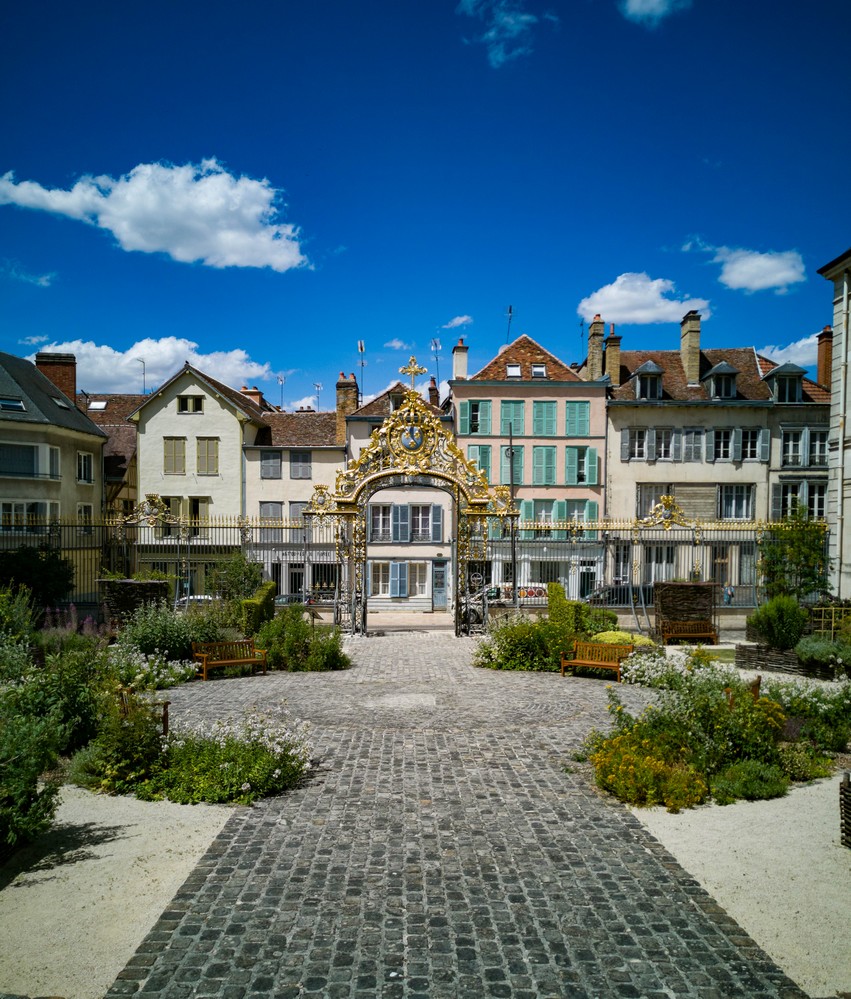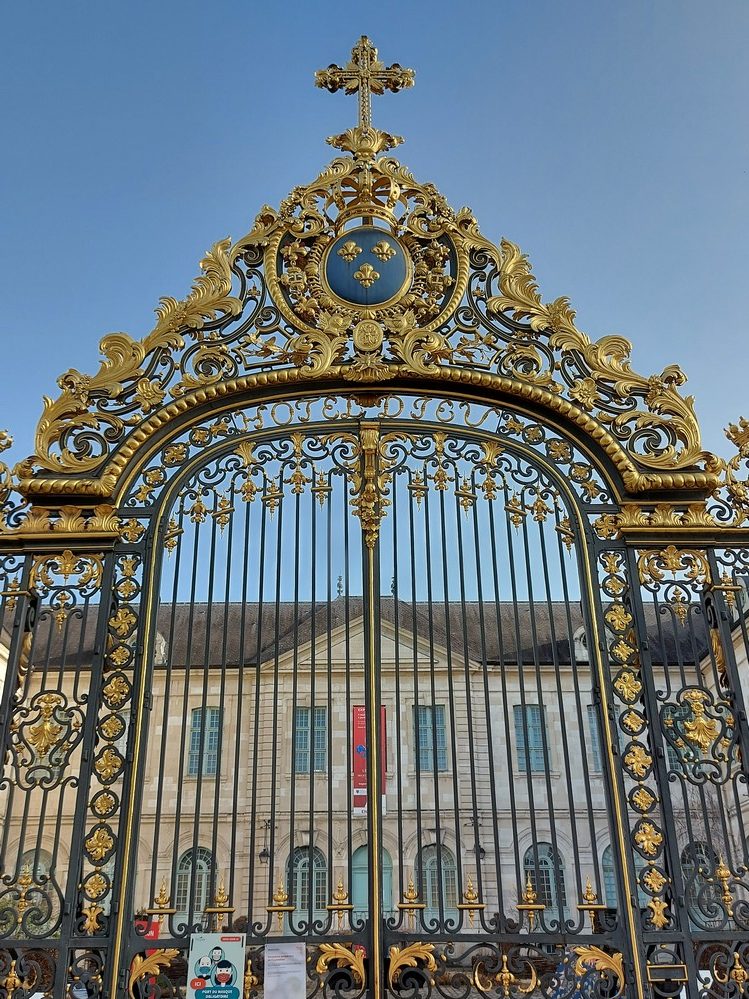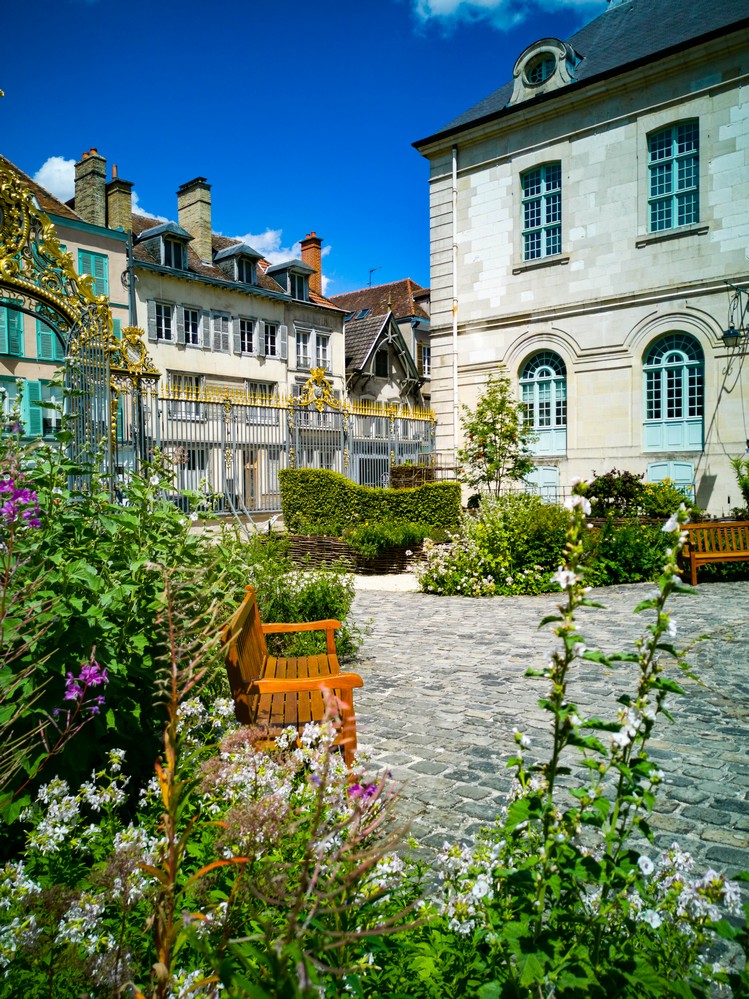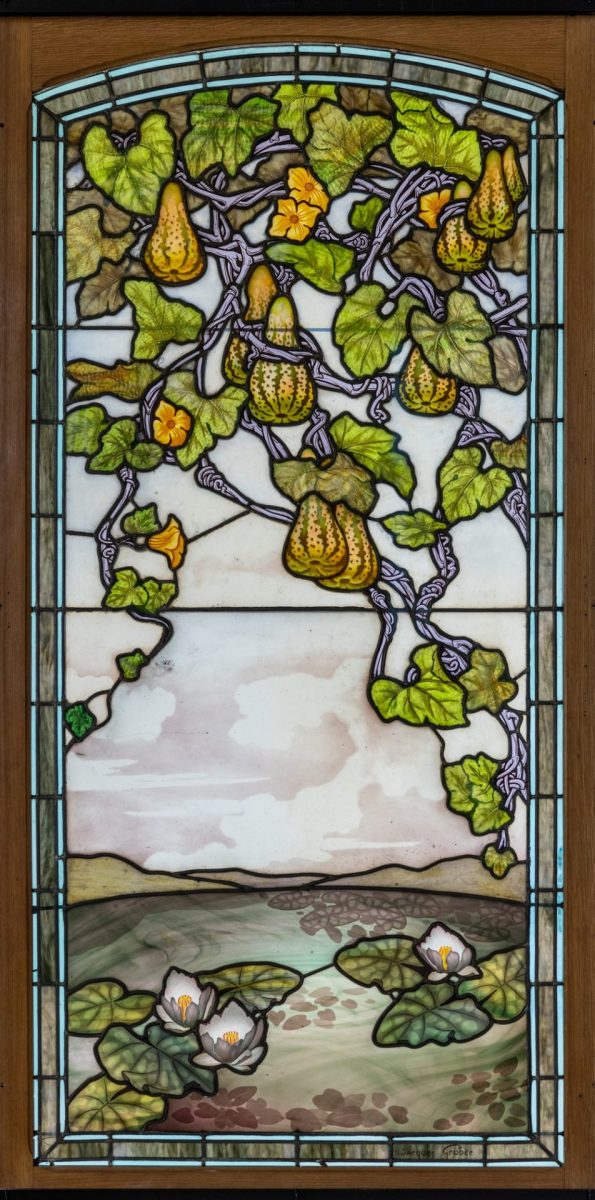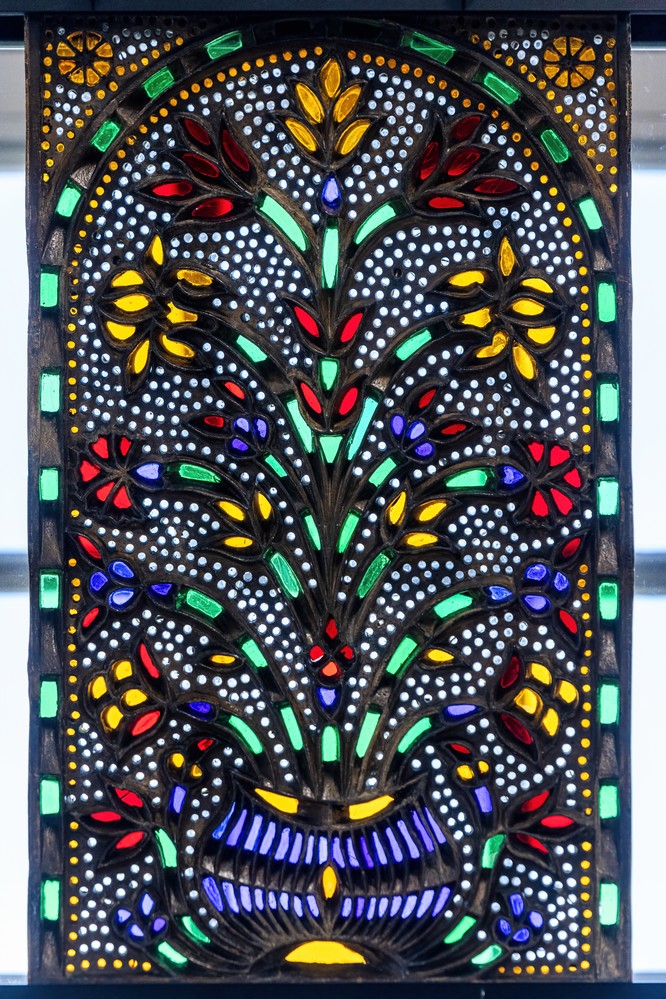Summary of the previous episode:
Stained glass is an art that is still very much alive, as demonstrated by the creation of many contemporary stained-glass windows artists, especially in Troyes.
The “Cité du Vitrail” in Troyes is a temple dedicated to the cult of stained glass, housed within the walls of the Hôtel-Dieu-le-Comte, an imposing building remarkable by its white classicism.
Standing on the banks of the canal, at the junction of the head and body of the “Champagne Cork” – the name given to the historic centre of Troyes because of its characteristic shape – it stands in all the splendour of its yellow Tonnerre stone, topped with a roof of purple slate from the Ardennes region.
Underneath its relatively neutral exterior, it is a showcase that shines with all its brilliance once you cross the threshold, like those churches whose stained-glass windows make them burn with an inner fire.
In all, 3,000 m2 spread over six floors, including the ground floor, are dedicated to the glory of stained glass in Troyes and the Aube department (and its guests).
A building full of history
Before it became the home of the “Cité du Vitrail” in 2013, first in a reduced format and then in its current configuration in December 2022, this building owned by the Aube department was originally a hospital, transformed into a hospice until it was decommissioned in 1988.
With a religious and hospitable vocation, during the first part of its life, it took in the poor and destitute, the sick and women in childbirth, as well as abandoned newborn babies. From the 18th century onwards, prisoners of war and sick or wounded soldiers were also admitted.
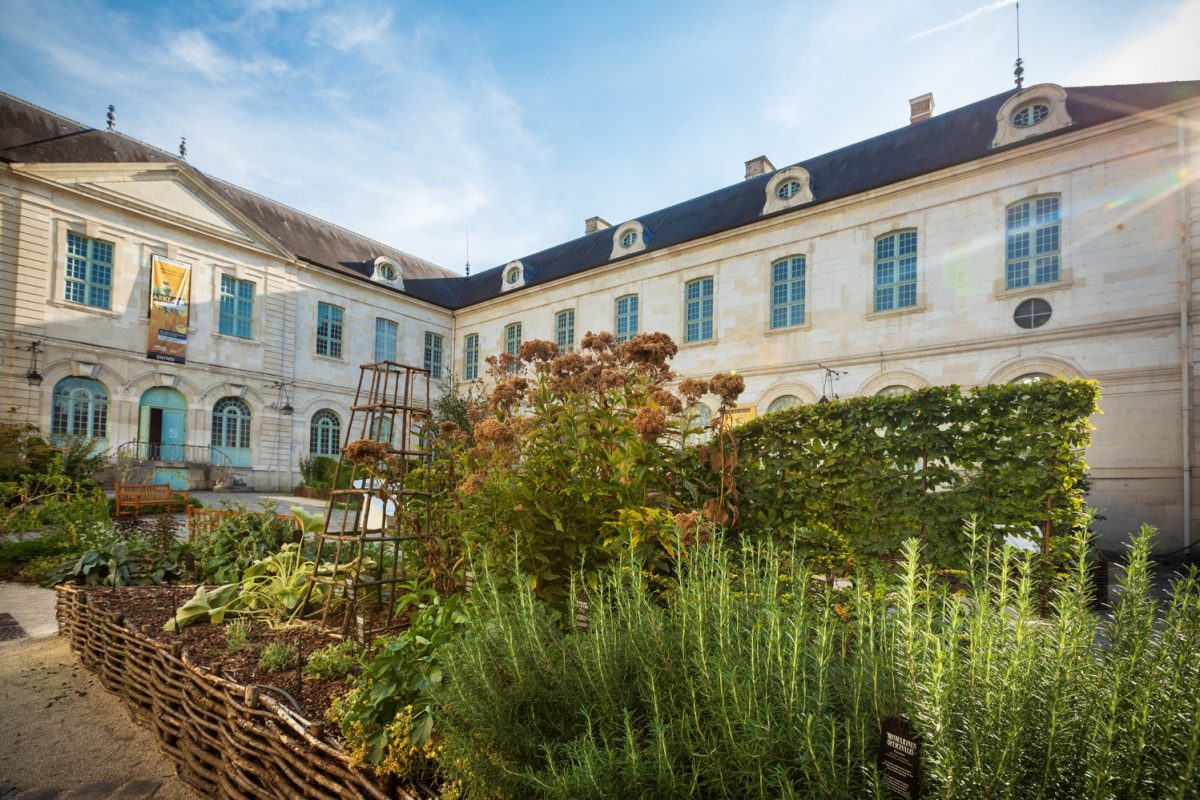
Founded in 1157 by Henry I the Liberal, Count of Champagne, the Hôtel-Dieu-le-Comte was completely rebuilt in the 18th century. Thanks to its grace, it has been listed as a historic monument. Three years of work were necessary to restore it to its former glory and prepare a setting worthy of hosting the “Cité du Vitrail”.
From one garden to another
The “Cité du Vitrail” occupies only one of the wings of the building, the west wing, such is its vast size. A university is installed in the east wing. The building linking the two wings is used for temporary exhibitions. Its central courtyard features a beautiful medieval-inspired garden enclosed by a masterly, partially gilded wrought-iron gate, listed as a historic monument.
Another garden, 2,800 m2 in size, has been completely restored in the spirit of a 19th-century hospital garden, and offers a wooded area overlooking the Prefecture pond. It is a balcony overlooking the city, perfect for a stroll beneath the Hôtel du Petit-Louvre and the cathedral.
You will have a full visit of the place in the next episode.
*1 Coloquintes et nymphéas, par Jacques Gruber, atelier Gruber, prov. demeure de Paul Luc (Nancy), 1905, prêt du musée de l’Ecole de Nancy © Studio OG
*2 Vase fleuri – Panneau islamique, prov. Egypte (Le Caire), XIXe siècle, prêt du Musée du Louvre © Studio OG

